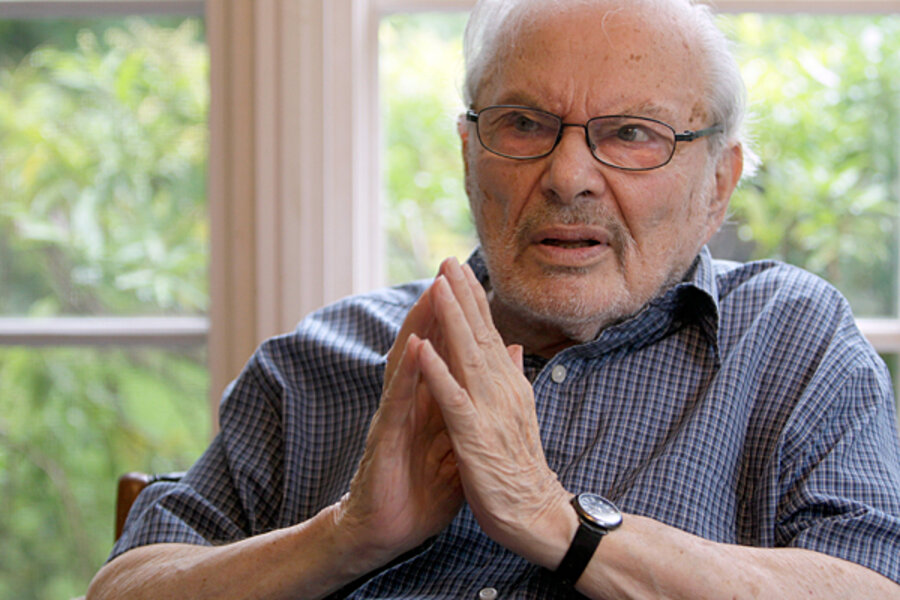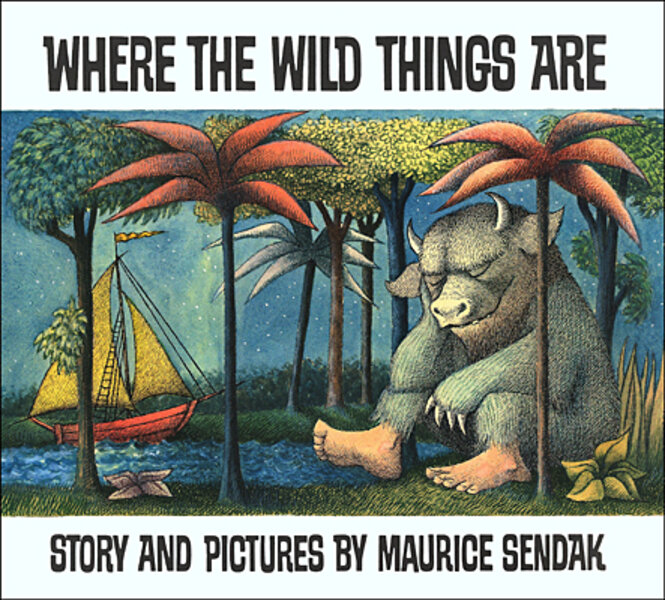Maurice Sendak tribute: much more than 'a kiddie-book artist'
Loading...
Maurice Sendak, who died early Tuesday, was a wide-ranging artist whose most popular works happened to be picture books for children.
Tens of millions of parents and young readers know “Where the Wild Things Are,” his classic depiction of what happens when an unruly, imaginative boy is sent to his room without supper. This story of Max and his wild rumpus won Sendak a Caldecott Medal in 1964 and was made into a hit movie in 2009.
Millions of real-life Maxes (and their sisters) were lulled toward sleep by the soft cadences of 1970's “In the Night Kitchen,” in which a boy named Mickey, who may or may not be dreaming, falls into a giant pot of batter for the “morning cake,” then flies off in a plane made of bread dough. Mickey helps finish the cake by pouring in milk from a bottle, to the delight of a strange yet unthreatening trio of bakers.
The imagination that produced these children's books also created ballet costumes and opera sets for adults. Sendak collaborated with Pulitzer-winning playwright Tony Kushner on the Czech opera “Brundibar” in 2003. He designed a “Nutcracker” production for the Pacific Northwest Ballet.
Sendak enjoyed the renown and financial independence provided by his efforts for children, but as a boy from Brooklyn who had never gone to college, he always wanted more, he told the Monitor’s Gloria Goodale in an interview in 2002.
“I wanted to be acknowledged as an artist,” he said, “not just some kiddie-book artist.”
Eventually that recognition arrived, as attitudes toward children’s literature changed and as Sendak received more awards for his work. In 1997, he won the National Medal of Arts. At that point, he realized that he had outgrown the need for accolades.
“I was accepted at the grown-up party,” he told Ms. Goodale in 2002. “The medal said, 'American Artist,’ [but] by then, I didn’t need it.”
“The distinctions of fine art bore me to death,” Sendak added.
Born in Brooklyn in 1928, Sendak was raised by Jewish-Polish immigrant parents who were keenly aware of the dangers and death their relatives and friends faced in Europe. Memories of the Holocaust fed into young Maurice’s burgeoning artistic imagination.
“My burden is living for those who didn’t,” he once told the Associated Press.
Sendak did not go to college and worked at odd jobs until landing a spot as a window dresser at toy store F.A.O. Schwartz in 1948. But the self-taught artist had always dreamed of being an illustrator, and in 1951 his break came when he was commissioned to do the art for “Wonderful Farm” by Marcel Ayme.
By 1957 he was established as an author-illustrator. His most famous works include “The Sign on Rosie’s Door,” “The Nutshell Library,” and “Seven Little Monsters.”
He also provided art for the well-known “Little Bear” series by Else Holmelund Minarik. (“In-ter-es-ting,” as Little Bear himself would say.)
Sendak himself was not a cuddly character. He once told an interviewer from the Guardian that he found the cruelty in the work of fellow children’s book author Roald Dahl to be off-putting.
“Scary guy. I know he’s very popular but what’s nice about this guy? He’s dead, that’s what’s nice about him,” said Sendak.
A longtime resident of Ridgefield, Conn., Sendak never slid into an easy retirement. He published his first pop-up book, “Mommy?,” in 2006. “Bumble-ardy,” his last book, came out in 2011. It depicted the world of a young pig who gets his first-ever birthday party at age nine. After his aunt tells him he’s had his party, but never again, Bumble-ardy says in tears, “I promise, I swear, I won’t ever turn 10.”
As Sendak told the Monitor in 2002, “I can’t exactly say why, but I am still trying to filter through all that business in my life and turn it into art.”
Associated Press material was used in this story.






